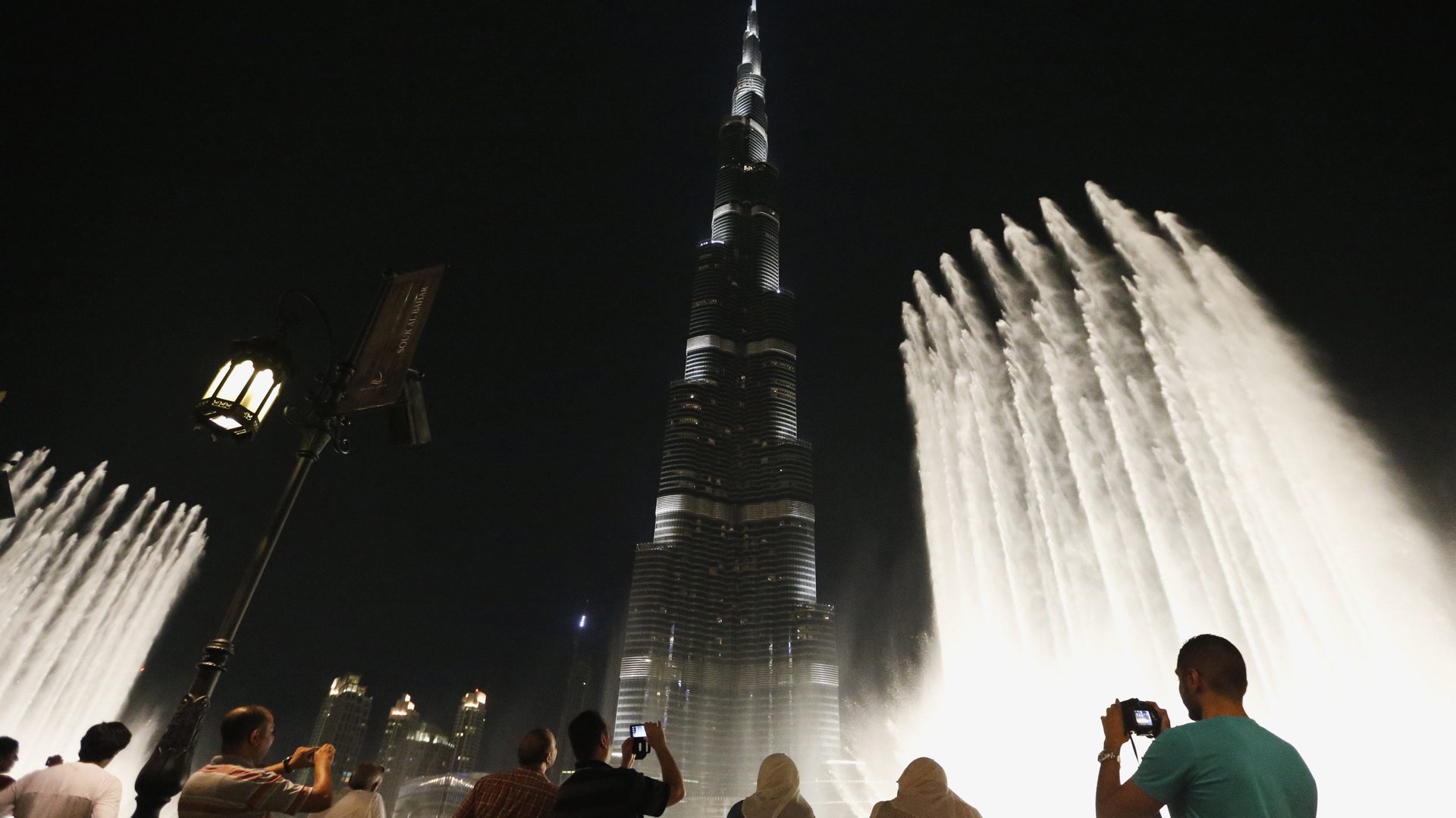Autocrats are more likely to build giant skyscrapers—even when their countries don’t need them
There’s a race on to build the tallest tower in the world. Currently in the lead: Dubai’s Burj Khalifa, at 828 meters. Saudi Arabia’s Jeddah Tower, projected to cost $1.2 billion and soar 1,000 meters high, will pass it and then some when it is completed in 2020. If Dubai wants to keep the title, it will need to add a spire or two to its new building dubbed simply “The Tower” which is slated to be 928 meters when it is completed in time for the World Expo 2020 to be hosted in Dubai. It’s not a coincidence that both Saudi Arabia and Dubai also fare badly on most measures of democracy.


There’s a race on to build the tallest tower in the world. Currently in the lead: Dubai’s Burj Khalifa, at 828 meters. Saudi Arabia’s Jeddah Tower, projected to cost $1.2 billion and soar 1,000 meters high, will pass it and then some when it is completed in 2020. If Dubai wants to keep the title, it will need to add a spire or two to its new building dubbed simply “The Tower” which is slated to be 928 meters when it is completed in time for the World Expo 2020 to be hosted in Dubai. It’s not a coincidence that both Saudi Arabia and Dubai also fare badly on most measures of democracy.
A new working paper from researchers at the University of Oslo found that autocracies build more new skyscrapers than democracies, and the buildings they construct tend to be more excessive and wasteful than those built in democratic countries. A harsh autocracy builds 1.6 more skyscrapers each year on average than a high-scoring democracy.
To reach that conclusion, the researchers cross-referenced a Council on Tall Buildings and Urban Habitats database of completed skyscrapers (defined as buildings that are at least 150 meters tall) with an index of how diffuse power is in each country, ranging from harsh autocracy to high-quality democracy.
The paper also found that autocracies are more likely to build skyscrapers where there is little clear economic benefit. For instance, in democratic countries, skyscrapers are usually built only in urban settings, while autocratic governments will sometimes build skyscrapers in rural parts of their countries. Skyscrapers in autocratic governments also tend to have a high percentage of “vanity meters,” which is the distance from the highest occupied floor to the top of the building, often bolstered by constructing spires. For instance, 29% of the total height of the Burj Khalifa consists of vanity meters.
The researchers suggest weak government accountability mechanisms allow autocratic leaders to pursue these projects even if the expenditure is not justified. They also argue that by building or subsidizing the construction of skyscrapers, autocratic leaders may be rewarding economic elites in their countries.
China, which also performs poorly on measures of democratic governance, is erecting skyscrapers at a frenetic pace and is already grappling with the issue of wasteful towers. Last year, Shenzhen, an electronics-manufacturing hub in southern China, completed 11 new skyscrapers, more than the US and Australia combined. China has topped the list of countries with the most completed skyscrapers every year for nearly a decade. But last year, Gu Jianping, the general manager of the construction company behind the Shanghai Tower, the nation’s tallest building, said demand for property was falling and developers should be wary of constructing too many tall buildings that could become ghost towers. “Even if you have money, you shouldn’t be too headstrong,” he told The Wall Street Journal.